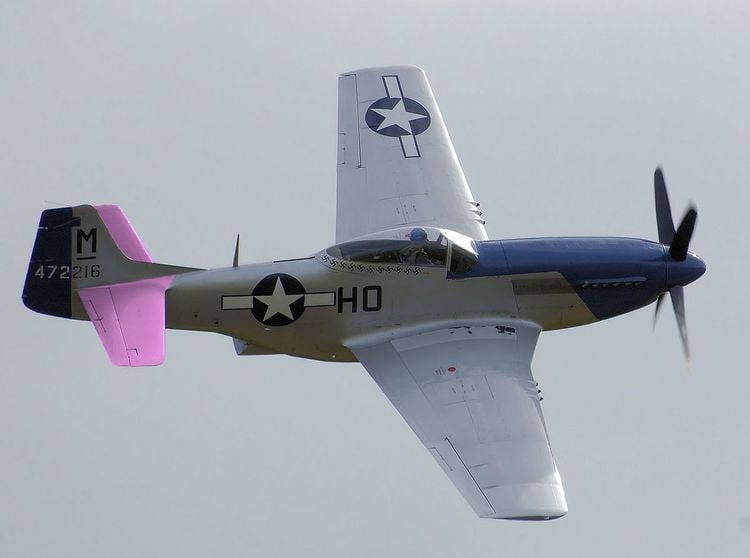 | ||
A tailplane, also known as a horizontal stabiliser, is a small lifting surface located on the tail (empennage) behind the main lifting surfaces of a fixed-wing aircraft as well as other non-fixed-wing aircraft such as helicopters and gyroplanes. Not all fixed-wing aircraft have tailplanes. Canards, tailless and flying wing aircraft have no separate tailplane, while in v-tail aircraft the vertical stabilizer, rudder, and the tail-plane and elevator are combined to form two diagonal surfaces in a V layout.
Contents
The function of the tailplane is to provide stability and control. In particular, the tailplane helps adjust for changes in the center of pressure or center of gravity caused by changes in speed and attitude, fuel consumption, or dropping cargo or payload.
Tailplane types
The tailplane comprises the tail-mounted fixed horizontal stabiliser and movable elevator. Besides its planform, it is characterised by:
Some locations have been given special names:
Stability
A wing with a conventional aerofoil profile makes a negative contribution to longitudinal stability. This means that any disturbance (such as a gust) which raises the nose produces a nose-up pitching moment which tends to raise the nose further. With the same disturbance, the presence of a tailplane produces a restoring nose-down pitching moment, which may counteract the natural instability of the wing and make the aircraft longitudinally stable (in much the same way a windvane always points into the wind).
The longitudinal stability of an aircraft may change when it is flown "hands-off"; i.e. when the flight controls are subject to aerodynamic forces but not pilot input forces.
Damping
In addition to giving a restoring force (which on its own would cause oscillatory motion) a tailplane gives damping. This is caused by the relative wind seen by the tail as the aircraft rotates around the center of mass. For example, when the aircraft is oscillating, but is momentarily aligned with the overall vehicle's motion, the tailplane still sees a relative wind that is opposing the oscillation.
Lift
Depending on the aircraft design and flight regime, its tailplane may create positive lift or negative lift (downforce). It is sometimes assumed that on a stable aircraft this will always be a net down force, but this is untrue.
On some pioneer designs, such as the Bleriot XI, the center of gravity was between the center of pressure from the wings and the tailplane, which also provided positive lift. However this arrangement can be unstable and these designs often had severe handling issues. The requirements for stability were not understood until shortly before World War I - the era within which the British Bristol Scout light biplane was designed for civilian use, with an airfoiled lifting tail throughout its production run into the early World War I years and British military service from 1914-1916 — when it was realised that moving the centre of gravity further forwards allowed the use of a non-lifting tailplane in which the lift is nominally neither positive nor negative but zero, which leads to more stable behaviour. Later examples of aircraft from World War I and onwards into the interwar years that had positive lift tailplanes include, chronologically, the Sopwith Camel, Charles Lindbergh's Spirit of St. Louis, the Gee Bee Model R Racer - all aircraft with a reputation for being difficult to fly, and the easier-to-fly Fleet Finch two-seat Canadian trainer biplane, itself possessing a flat-bottom airfoiled tailplane unit not unlike the earlier Bristol Scout. But with care a lifting tailplane can be made stable. An example is provided by the Bachem Ba 349 Natter VTOL rocket-powered interceptor, which had a lifting tail and was both stable and controllable in flight.
In many modern conventional aircraft, the center of gravity is placed ahead of the center of pressure of the main wing. The wing lift then exerts a pitch-down moment around the centre of gravity, which must be balanced by a pitch-up moment (implying negative lift) from the tailplane. A disadvantage is that it generates trim drag.
Active stability
Using a computer to control the elevator allows aerodynamically unstable aircraft to be flown in the same manner.
Aircraft such as the F-16 are flown with artificial stability. The advantage of this is a significant reduction drag caused by the tailplane, and improved maneuverability.
Mach tuck
At transonic speeds, an aircraft can experience a shift rearwards in the center of pressure due to the buildup and movement of shockwaves. This causes a nose-down pitching moment called Mach tuck. Significant trim force may be needed to maintain equilibrium, and this is most often provided using the whole tailplane rather than a small trim tab, in the form of an all-flying tailplane or stabilator.
Control
A tailplane usually has some means allowing the pilot to control the amount of lift produced by the tailplane. This in turn causes a nose-up or nose-down pitching moment on the aircraft, which is used to control the aircraft in pitch.
Elevator A conventional tailplane normally has a hinged aft surface called an elevator,
Stabilator or all-moving tail In transonic flight shock waves generated by the front of the tailplane render any elevator unusable. An all-moving tail was developed by the British for the Miles M.52, but first saw actual transonic flight on the Bell X-1; fortunately Bell Aircraft Corporation had included an elevator trim device that could alter the angle of attack of the entire tailplane. This saved the program from a costly and time-consuming rebuild of the aircraft.
Transonic and supersonic aircraft now have all-moving tailplanes to counteract Mach tuck and maintain maneuverability when flying faster than the critical Mach number. Normally called a stabilator, this configuration is often referred to as an "all-moving" or "all-flying" tailplane.
